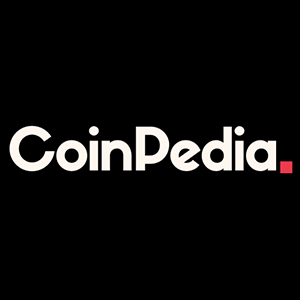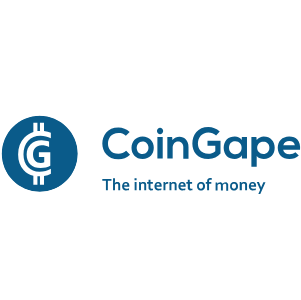

Riot Platforms: Increased Capacity, Less Profit, More Dilution
Summary Riot Platforms' Q2 performance reflects both progress and challenges. The company reduced its average cost of mining Bitcoin by ~26% YoY, and earned $13.5 million in power curtailment credits. Profitability remains a challenge for Riot Platforms, with a net loss of $(27.7) million for Q2, and reliance on secondary offering of shares to raise additional funds, leading to equity dilution. Thesis Bitcoin mining companies operate in a challenging and volatile environment, and Riot Platforms ( RIOT ) is no exception. Despite making some good progress by increasing its Bitcoin production by 27% and decreasing the average Bitcoin production cost, RIOT's persistent struggle to achieve profitability casts a shadow over its future outlook. The net loss incurred in Q2, combined with a negative Return on Equity and a low gross profit margin, highlights the difficulties RIOT face in generating positive returns from its investments. Additionally, RIOT's reliance on issuing common stock for financing raises concerns about equity dilution that could impact shareholder value. Given these factors and the unpredictable nature of the crypto industry, Riot Platforms' financial challenges could intensify. In this analysis, we'd look at why caution is warranted in holding this stock in your portfolio. Q2 Recap Riot Platforms' Q2 earnings report unveils significant achievements and some shortcomings. The company registered a total revenue of $76.7 million, representing a YoY growth of 5.2%, although falling short of estimates by $8.76 million. RIOT surpassed expectations in its GAAP EPS, reporting -$0.17 which beat estimates by $0.03. RIOT's Q2 achievements include a reduction in the average price of mining bitcoin and earning $13.5 million in power curtailment credits. RIOT's main challenge remains profitability. The company reported $408.4 million in working capital, including $289.2 million in cash on hand and $221.4 million in unencumbered Bitcoin ( BTC-USD ) (BTC holdings that are not used as collateral for loans or other financial obligations, making them free from encumbrances). Increased Mining Capacity and Efficiency Earnings reports of Bitcoin mining companies for Q2 have shown that since the start of this fiscal year, mining companies have incurred significant operational expenses in procuring hardware to increase their mining capacity and operational efficiency. It is no different in the case of RIOT. The company plans to reach a 12.5 EH/s self-mining hash rate capacity by Q4 and has been making significant investments in this regard. Despite challenges posed by a severe winter storm in December 2022, affecting Buildings F and G at its mining facility in Rockdale, Texas, putting out 17,040 mining rigs early this year, Riot Platforms weathered the storm, mining 1,775 Bitcoin in Q2 as compared to 1,395 Bitcoin in Q2 last year, a 27.22 YoY increase. The company reduced the mining cost per Bitcoin by ~26% YoY, averaging $8,389 per Bitcoin produced, in contrast to $11,316 per Bitcoin mined in Q2 2022; this is an indication of operational efficiency. Profitability Is Not In Sight Riot Platforms' financial report reveals a net loss of $27.7 million for Q2, which is a significant figure that contrasts with the company's revenue and operational growth. This net loss includes various non-cash charges, including depreciation and amortization of $66.2 million, and non-cash charges of $5.6 million related to the adjustment in the value of its held BTC assets. These non-cash charges severely impacted Riot Platform's bottom line, presenting a challenge to achieving profitability. RIOT's reported cash from operations and cash from investing were both negative. While negative cash flow from investing can be overlooked in the short term because of the company's recent investments to increase its mining capacity and operating efficiency, negative cash flow from operations (which means its primary business activity - Bitcoin mining - has not been profitable) poses another legitimate concern about Riot Platforms' profitability. RIOT Profitability Factor Grades (Seeking Alpha) RIOT scores poor factor grades for profitability. RIOT's gross profit margin of 16.40% is significantly lower than the sector median of 47.89%. Despite the injection of funds through the issuance and sale of secondary shares, Riot Platforms' Return on Common Equity ( TTM ) exhibits a concerning trend. The reported negative RoE of -48.54% starkly contrasts with the sector median of 0.03%. This underscores the company's struggles in converting equity capital into positive returns. As I pointed out in my other analysis of a peer company (Marathon Digital) that just reported Q2 earnings, profitability could be a major problem for Bitcoin mining companies in the coming months as the Bitcoin halving event approaches (est. April 2024). The halving event can lead to mining difficulty, prompting procurement of more powerful hardware, which in turn leads to higher energy costs and other OpEx. Stock and Equity Dilution On its cash flow statement, Riot Platforms recorded a total cash from financing of $173 million for Q2. This injection of capital from external sources is advantageous as it provides the company with additional financial flexibility. However, a closer look at the cash flow statement shows that 100% of Riot Platform's cash flow from financing came from the issuance of its common stock. In the earnings call, Riot Platforms revealed that it entered an At-The-Market ( ATM ) offering in 2022, that allows the company to offer and sell up to $500 million worth of its common stock. This, in my view, has serious implications for shareholders as their ownership stake is diluted and the value of their holdings is reduced. Reliance solely on the secondary offering of shares to raise capital could prove unhealthy for RIOT's finances. Traditionally, most Bitcoin mining companies stash mined Bitcoin and do not sell them immediately, waiting for a price increase before they liquidate their holdings, to offset potential losses. Based on insights from independent research , miners held an average of 75% of their total mined Bitcoins between January 2022 and June 2023. While it might seem like a great strategy to hold on to Bitcoin holdings and sell at a higher price in the future (while generating financing through other means like secondary share offerings), in my view, this is a risky strategy because an increase in the price of Bitcoin, though likely, is not guaranteed, and is largely based on speculation. RIOT Valuation P/CF (Seeking Alpha) RIOT's current P/CF ratio of 297.25x indicates that investors are valuing the company at a very high multiple of its cash flow when compared to its sector median of 19.45x. The stock is trading at a substantial premium compared to its actual cash generation, based on several qualitative factors already highlighted in this analysis. With a P/S ratio of 9.43x, significantly higher than the sector median of 2.72x, the stock appears overvalued relative to its current revenue. Moreover, the Forward P/S ratio of 8.3x implies cautious market expectations for future revenue growth. RIOT's levered free cash flow stands at -$127.87 million. The combination of RIOT's negative levered free cash flow of -$127.87M and its high P/CF ratio of 297.25x creates a situation where the stock's valuation is significantly disconnected from its cash flow reality. Riot Platforms' high valuation multiples, when coupled with Bitcoin's inherent volatility, make things quite tricky for this stock. In my view, RIOT is overvalued. Conclusion In conclusion, Riot Platforms' Q2 performance reflects both progress and challenges. The company's increased mining capacity and operational efficiency efforts have yielded positive results, evident in higher Bitcoin production and lowered mining costs. However, the struggle to achieve profitability remains a real concern. The reliance on stock issuance for financing raises serious questions about its equity dilution and financial health. The reported working capital of $408.4 million suggests RIOT's ability to meet its short-term obligations. The dynamic between the company's working capital and cash flow highlights the intricate nature of Riot Platforms' financial health. While a strong working capital suggests an ability to cover short-term obligations, the negative cash flow indicates the need for careful consideration of the sources and uses of funds. Balancing these two aspects will be crucial for Riot Platforms as it navigates its path toward sustained profitability.











